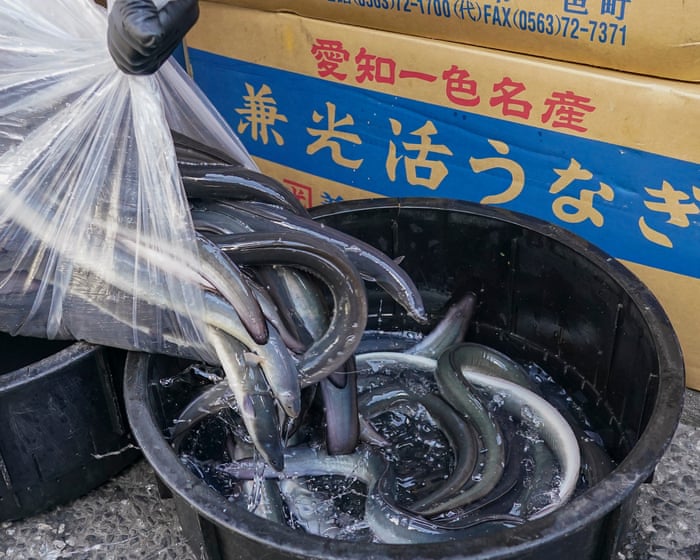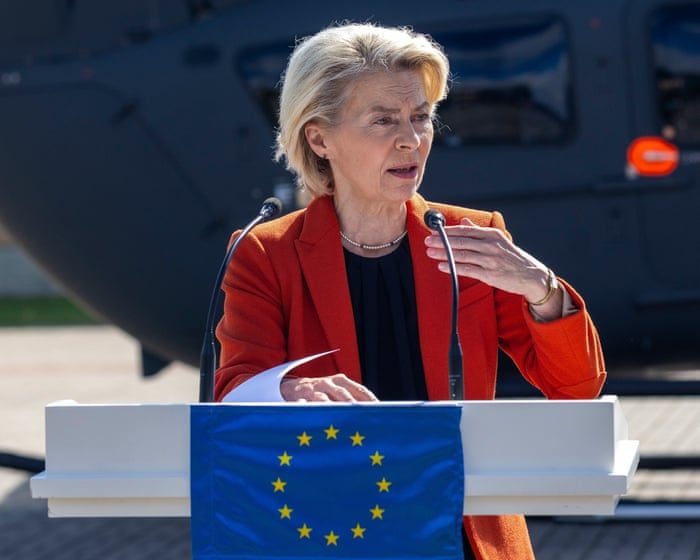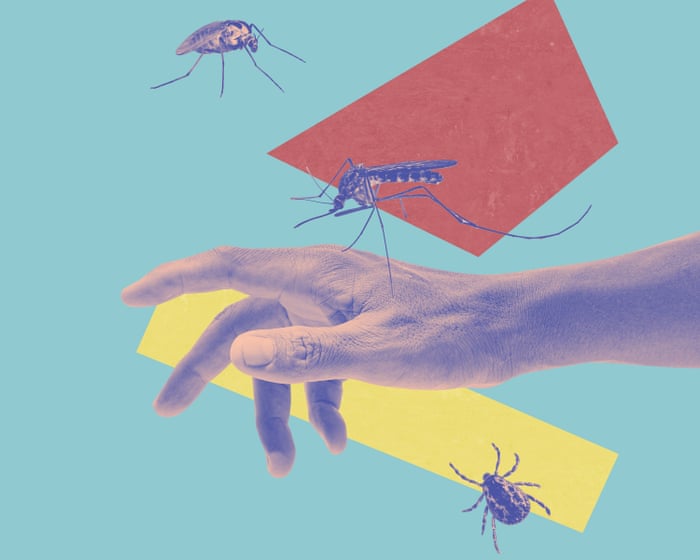By 10 a.m. on the midsummer Day of the Ox, the city of Narita is filled with the scent of charcoal and sugar. Crowds of visitors pack the cobbled streets, queuing for grilled eel—a traditional dish believed to cool the body and lift spirits during the humid season.
At Kawatoyo, a popular restaurant specializing in grilled eel for over 115 years, a customer seated on the tatami-mat floor shares his concern: “We’d be so sad if eels became extinct and we couldn’t eat them anymore.” For the past ten years, he and his wife have made a two-hour drive to join this midsummer celebration, along with thousands of others across Japan.
His worry is justified. According to a recent study by Chuo University, 99% of the 286,000 tonnes of eel consumed worldwide are American, Japanese, or European eels—all listed as endangered by the International Union for Conservation of Nature, with European eels classified as critically endangered.
Their populations have sharply declined due to habitat loss, pollution, climate change, and a thriving illegal trade in European eels. Valued at around €2.5 billion annually, eel trafficking is Europe’s largest wildlife crime. “If there is demand, there will be trafficking,” says José Antonio Alfaro Moreno, who leads Europol’s anti-eel trafficking operations.
Despite a European export ban imposed 15 years ago, eels continue to reach plates worldwide, especially in Asia. Over half of European eel seizures between 2011 and 2018 were bound for China, which accounts for 70% of global eel exports. Japan is one of the world’s top eel consumers, and in 2024, an estimated 73% of its eel supply was imported, according to the Japanese Fisheries Agency.
So how has such a large illegal trade been able to thrive, and what is being done to stop it? To investigate, more than 50 experts—including scientists, eel farmers, brokers, activists, law enforcement, criminologists, and importers—were interviewed across Japan, Spain, Italy, and France. International trade data, photographs, and documents linked to the illegal trade were also analyzed.
The true scale of the illegal trade only became clear in 2016, when Hong Kong authorities intercepted luggage filled with plastic bags of live fish and asked Dr. David Baker of Hong Kong University to develop an eDNA test to identify the species. Baker discovered the bags contained European eels.
“It hit me like a ton of bricks that a critically endangered species is on the shelf at all these retail outlets outside Europe,” says Baker, who found that 45% of eels in Hong Kong convenience stores were European. He shared his genetic test with authorities worldwide.
Similar eDNA toolkits are now used globally to inspect eel shipments, including in a 2022 U.S. case. However, this is just one tool. While many seafood products have been part of traceable digital supply chains since the 1990s, no such global system exists for eels.
“There is no traceability,”Dr. Hiromi Shiraishi of Chuo University notes that even Japanese importers who strive to source only legal eels find it extremely challenging to trace their true origins. In response, Europol established the Operation Lake taskforce in 2017 with the aim of halting eel traffickers.
Investigators initially targeted poaching hotspots in France, Spain, Portugal, and the UK. However, as soon as one smuggling network was uncovered, another would surface. Today, police are pursuing traffickers across 30 countries in collaboration with local authorities.
Moreno points out a new trend: the African route. Glass eels—the transparent, juvenile stage of European eels—are transported by air or sea to Morocco, Mauritania, or Senegal, where they can be “laundered” into legal exports bound for Asia. These transit countries also offer traffickers lower costs for maintaining shipments, such as changing water, compared to Europe. Scientists are hired to keep the eel mortality rate as low as 1% per shipment.
“It’s incredible how skilled they are at their job,” Moreno remarks, “and it’s all because of the huge profits involved.”
Smuggling methods continue to evolve. During the Covid pandemic, when airport security was relaxed, eels were hidden in suitcases—a single courier could carry 50kg spread across three bags. Now, larger profits are made through fresh cargo shipments, where up to 500kg of glass eels can be concealed among mussels or frozen meat.
The most recent phase of Operation Lake, from October 2024 to June 2025, involved 16,131 inspections across Europe, leading to 26 arrests and the seizure of 22 tonnes of glass eels. Despite such efforts, traffickers consistently stay ahead, their routes as elusive as the eels themselves.
In Landes, near the French Basque country, Joseba Aguirrebarrena tends to his square tanks, where thousands of wriggling eels stir the water kept oxygenated by pumps. These eels are sourced from the nearby Adour River, where the few remaining eel fishers set up fine-mesh nets along the moonlit banks.
As one of only three glass-eel brokers left in France, Aguirrebarrena buys eels from fishers along the Atlantic coast and sells them to farms, restaurants, or individuals across Europe—primarily to Spanish chefs and northern European breeders, or for EU repopulation programs. Some buyers raise the eels until they are ready for legal consumption in Europe, where they remain a culinary delicacy despite their declining numbers.
For instance, in the Basque region, glass eels are cooked with olive oil and garlic for the San Sebastián feast, while in Italy’s Po River delta, adult eels are sliced, grilled with salt, or added to risotto.
The ongoing crackdown by European authorities on illegal eel trading means that everyone in the industry, including Aguirrebarrena, has faced legal scrutiny at some point, accused of either selling to traffickers or lacking proper documentation. This frustrates Aguirrebarrena and his son, who helps run the business. They believe trafficking isn’t the primary threat to eels.
“It’s important for the ministry and the state to recognize that there are other issues beyond targeting fishers and traders,” says his son, Ibai Aguirrebarrena Mendiboure. They urge the government to halt dam projects and address additional environmental challenges.Stop wastewater pollution. According to Aguirrebarrena Sr, eels have lost 70% of their habitat over the last 40 years. This has led some to call for European countries to take strong measures by following the International Council for the Exploration of the Sea’s (ICES) advice to temporarily shut down eel fisheries across the continent. Javier Lopez of the environmental group Oceana notes, “Ministers ignore this zero-catch recommendation every single year.”
In a restaurant in Donostia-San Sebastián, in Spain’s Basque country, traditional pintxos featuring baby eels, or angulas, and ham are on display.
However, not everyone believes that closing fisheries is the best way to protect eels—including the Aguirrebarrenas, who have a business to run. In 2023, the General Fisheries Commission for the Mediterranean (GFCM) suggested that eel fishing should stay partially open so that fishers can assist in preserving habitats. Eleonora Ciccotti, an eel expert at the University of Rome, supports this view. Her research shows that rivers are affected by dams, degradation, water pollution, and habitat loss. She explains, “If there’s no fishery, no one will maintain the channel because it’s expensive and complicated.”
At the same time, many of the remaining eels are being illegally caught from rivers and sold to traffickers for higher prices than what fishers can get legally in Europe.
The situation is further complicated by the fact that different countries treat eels differently as a species, and traffickers take advantage of these inconsistencies. Dr. Mònica Pons Hernández, an environmental criminologist at Bergen University, points out, “It’s relatively straightforward to identify cocaine or drug trafficking because they’re illegal everywhere.” She adds that the legal status of eels in the market “undermines everything.”
Efforts to save the eels are underway. In November, at a conference in Uzbekistan focused on protecting endangered species, the European Union and Honduras will propose a vote to strengthen protections for all Anguilla eel species, including Japanese and American eels, under the Convention on International Trade in Endangered Species (CITES) treaty.
Supporters argue that this change would make it harder for traffickers to pass off European eels as American eels. However, it would also mean that all global eel shipments would need extra export permits, which industry advocates say would raise costs and create unnecessary bureaucracy.
Asia, particularly Japan, is resisting the proposal. Shinya Matsuura, president of the Japanese Eel Importers Association, who will attend the conference to oppose the plan, calls it “really unfair.” He points to the abundant harvest of Japanese baby eels reported in China, Korea, and Japan in 2025, suggesting that Asian nations have managed their eel stocks well, unlike Europe.
After a decade of failed conservation, law enforcement, and trade agreements to stop European eel trafficking, there is hope that growing consumer awareness will lead diners to seek out locally sourced eels. Kosumi Ito, the third-generation owner of Kawatoyo restaurant in Japan’s Chiba prefecture, shares his dream: “My dream is to make Narita unagi [eel].” At his restaurant, each eel is expertly filleted from head to tail in the traditional Chiba style by a skilled specialist trained for years in the craft.Faced with the decline of local eel, Ito recently started a new venture: raising eels at one of his restaurants. “We want to return to our roots—let’s eat the eel we catch in Chiba.”
At Kawatoyo restaurant in Narita, an eel is being filleted. Photo: Toru Hanai
However, others feel that conservation efforts are pointless. “As I see it, the only end to glass eel trafficking is the extinction of the European eel,” says Europol’s Moreno. “Because if there’s nothing left to fish, there’s nothing left to smuggle.”
Additional reporting by Alice Facchini and Sofia Nardacchione in Italy.
This investigation was supported by Journalismfund Europe.
Frequently Asked Questions
Of course Here is a list of FAQs about the illegal European eel trade designed to be clear concise and informative for a general audience
BeginnerLevel Questions
1 What is the illegal eel trade
Its the smuggling and illegal selling of European eels which are a critically endangered species Because their trade is heavily restricted a black market has grown to supply demand primarily in Asia
2 Why are European eels so endangered
A combination of factors overfishing habitat loss pollution and climate change affecting their ocean currents
3 Why is there so much demand for eels
Glass eels are considered a delicacy especially in East Asia where they are grown in farms and then served as dishes like kabayaki High demand and high prices fuel the illegal trade
4 What does glass eel mean
Its the life stage of the eel after it hatches and drifts from its Atlantic spawning grounds to European coasts They are tiny transparent and incredibly valuable making them the primary target for smugglers
5 How are the eels smuggled
Smugglers use creative methods to bypass authorities such as hiding them in suitcases shipping them falsely declared as other fish or transporting them in hidden compartments in vehicles
IntermediateLevel Questions
6 What makes stopping this trade so difficult
The supply chain is complex and secretive It involves many players from local poachers to international criminal networks The tiny size of glass eels also makes them easy to conceal in large numbers
7 Isnt there a legal eel fishing season
Yes but its tightly regulated with strict quotas The problem is that the legal supply is far too small to meet the massive illegal demand and illegal catches are often laundered into the legal market
8 What are the consequences if the European eel goes extinct
Eels are a vital part of the ecosystem Their loss would disrupt food webs in rivers lakes and estuaries impacting other fish birds and mammals It would also represent a major failure in global wildlife conservation
9 Who is buying these illegally smuggled eels
The vast majority are shipped to eel




